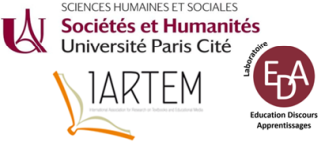Research problem
Fostering critical thinking (CT) is considered a major educational objective in most countries, viewed as such by policymakers, researchers, and educators alike. However, the meaning of this concept lacks consensus, as evidenced by the numerous definitions proposed in the literature (Lai, 2011). In my PhD research, I investigate the various conceptions of CT in the French educational context. Through interviews with secondary school teachers, it has become apparent that a significant number of them use YouTube videos on this topic as educational resources. What is the content of these videos? What view of CT do they convey?
This communication presents a case study of the YouTube channel most frequently mentioned by teachers, called Hygiène Mentale (Mental Hygiene). Its content deals with Scientific Skepticism. It was created in 2014 and contains 52 videos with a usual duration of about 20 minutes. As of January 2024, it had more than 392 000 subscribers. Our research questions are as follows:
RQ1. How is CT being described and presented by this YouTube channel?
RQ2. To which concepts and practices is CT associated in this resource?
Methods
7 of Hygiène Mentale's videos were selected: the 3 most viewed ones and 4 that were mentioned by teachers during interviews (see table 1 in the attached files). Qualitative content analysis (Bardin, 2013) was used to identify recurring elements. As the goal of this study is to understand the youtuber's understanding of CT within his own framework, no pre-established analysis grid was used.
The videos were watched twice to identify their main themes and the key notions presented. Then, the subtitles of each video were downloaded to get written transcripts of the youtuber's discourse, search for every mention of CT and examine how the notion is used and described. The diagrams displayed in the videos during these sections were extracted and analyzed as well.
Preliminary results
The videos are written and produced by a former physics teacher turned computer graphics designer. His target audience was the skeptic community but reached a much wider audience. For teachers his videos thus qualify as resources by opportunity (Puimatto, 2014). They usually contain tips and advises on how to improve one's reasoning to become more rational or how to better search and verify information online. They are based on his own experience and personal ideas, as well as explanations of some notions drawn from logic, statistics, psychology, and epistemology that he deems useful to help people think more critically in their everyday life. He also relies on maxims and rules of thumb taken from scientific skepticism (Vuolanto & Kolehmainen, 2021) and equates CT with this intellectual and social movement.
CT is presented as a form of “intellectual self-defense", a means for individuals to protect themselves against manipulations and illusions, such as disinformation, pseudoscience, and their own unjustified beliefs. It is compared to a sieve used to sort out which ideas or information one should accept as true and let enter their mind.
CT is strongly associated with “the scientific method” consisting of formulating hypothesis about a phenomenon, creating rigorous experimental protocols and statistical analysis to test them. According to the youtuber this method can also be used in everyday life to evaluate various claims relating to knowledge.
The vision of CT conveyed by this YouTube channel is imbued with radical positivism (Dauphin, 2022) and is sometimes at odds with contemporary scientific literature on this topic. For instance Lai's review (2011) does not mention "the scientific method" as part of CT nor the use of maxims to promote it.
Besides, though teachers enjoy this channel's content, most of it does not align with the curriculum.
References
Bardin, L. (2013). L'analyse de contenu. Presses Universitaires de France. https://doi.org/10.3917/puf.bard.2013.01
Dauphin, F. (2022). Succès et limites du debunking pour lutter contre la désinformation. Questions de communication, 42. https://doi.org/10.4000/questionsdecommunication.30076
Lai, E. R. (2011). Critical thinking: A literature review. Pearson's Research Reports.
Puimatto, G. (2014). Numérique à l'École – usages, ressources, métiers, industries. Distances et médiations des savoirs, 2(5), https://doi.org/10.4000/dms.509
Vuolanto, P., & Kolehmainen, M. (2021). Gendered Boundary-work within the Finnish Skepticism Movement. Science, Technology, & Human Values, 46(4), 789‑814. https://doi.org/10.1177/0162243920947475

 PDF version
PDF version
